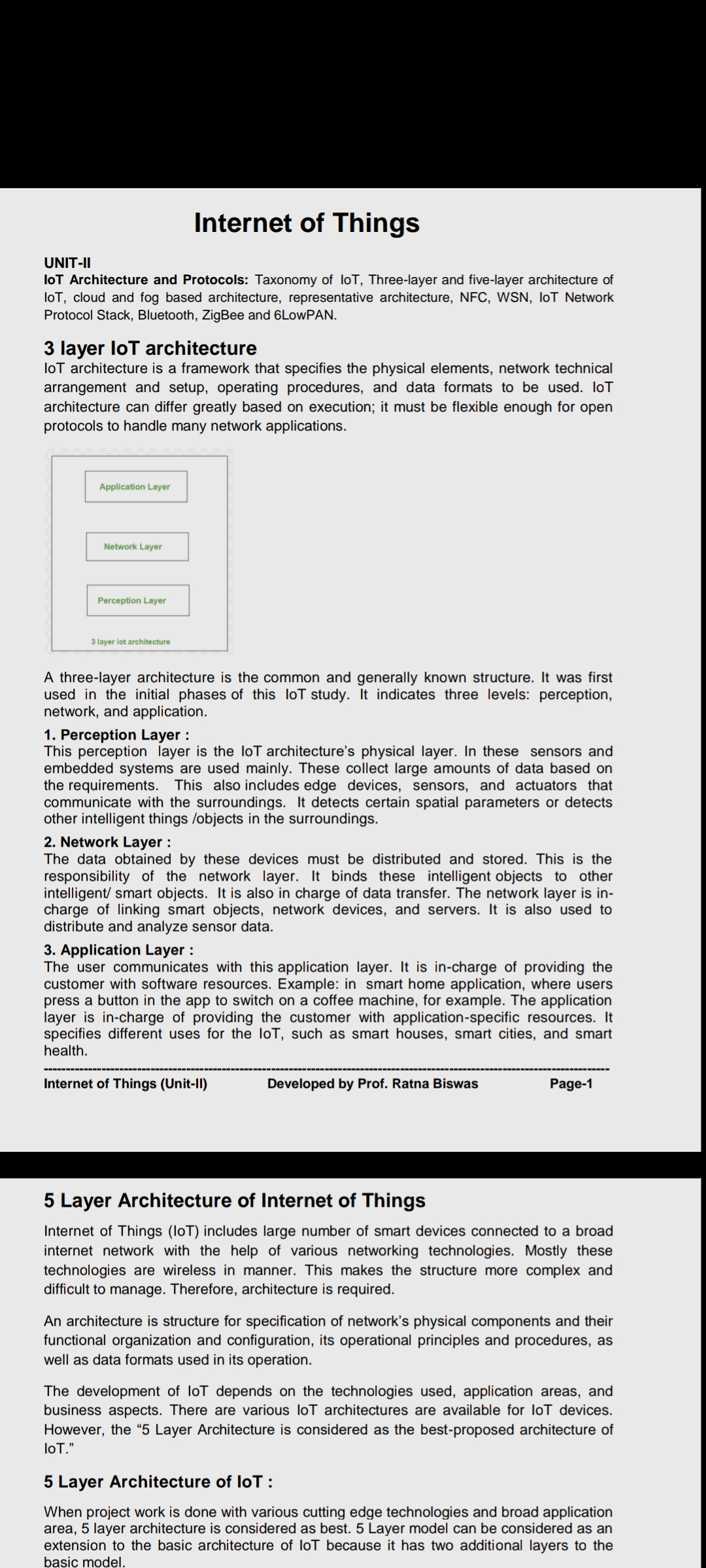What are the types of architectures in Internet of Things and what do their layers represent?

Understand the Problem
The text discusses the architecture and protocols of the Internet of Things (IoT), focusing on the three-layer and five-layer architectures. It explains the roles of each layer including perception, network, and application layers, as well as the significance of these architectures for managing IoT systems.
Answer
IoT architectures commonly include three, four, or five layers, each serving different functions.
IoT architectures commonly include three, four, or five layers. Each layer serves different functions: Perception/Sensing Layer (collects data), Network/Connectivity Layer (transfers data), Processing/Data Layer (manages data), Application Layer (interacts with users), and sometimes a Business Layer (examines data and business models).
Answer for screen readers
IoT architectures commonly include three, four, or five layers. Each layer serves different functions: Perception/Sensing Layer (collects data), Network/Connectivity Layer (transfers data), Processing/Data Layer (manages data), Application Layer (interacts with users), and sometimes a Business Layer (examines data and business models).
More Information
IoT architecture layers organize the flow and management of data, from physical devices to user applications, optimizing performance and integration.
Tips
It's vital to precisely define the function of each layer to avoid confusion and ensure efficient data management.
Sources
- 4 Layers of IoT Architecture Explained - Zipit Wireless - zipitwireless.com
- 6 IoT Architecture Layers and Components Explained - TechTarget - techtarget.com
- Architecture of Internet of Things (IoT) - GeeksforGeeks - geeksforgeeks.org